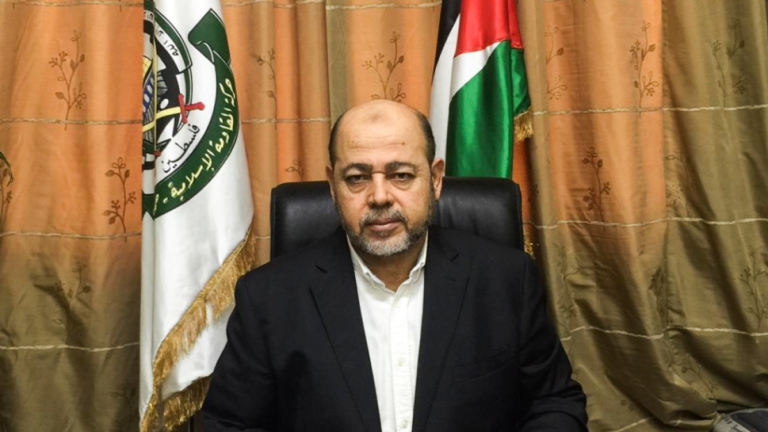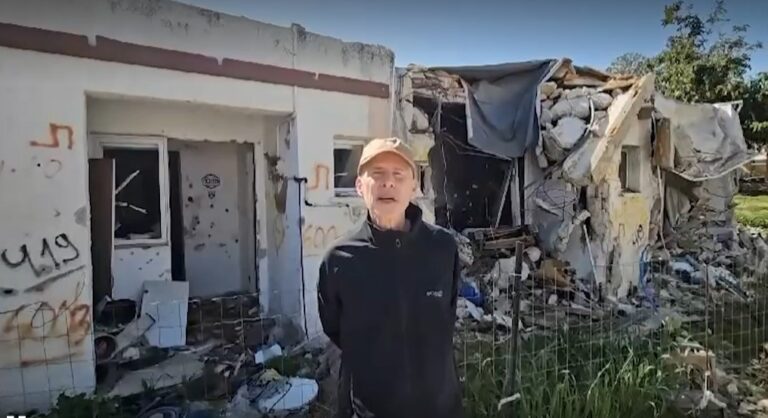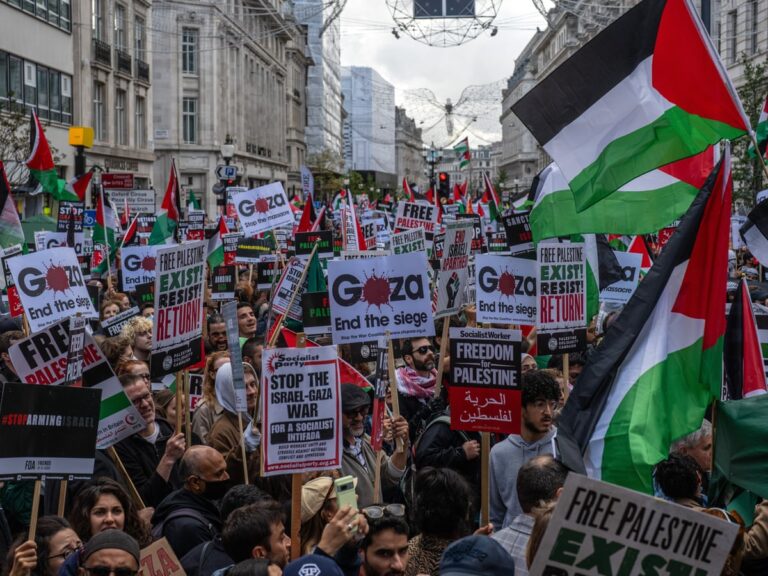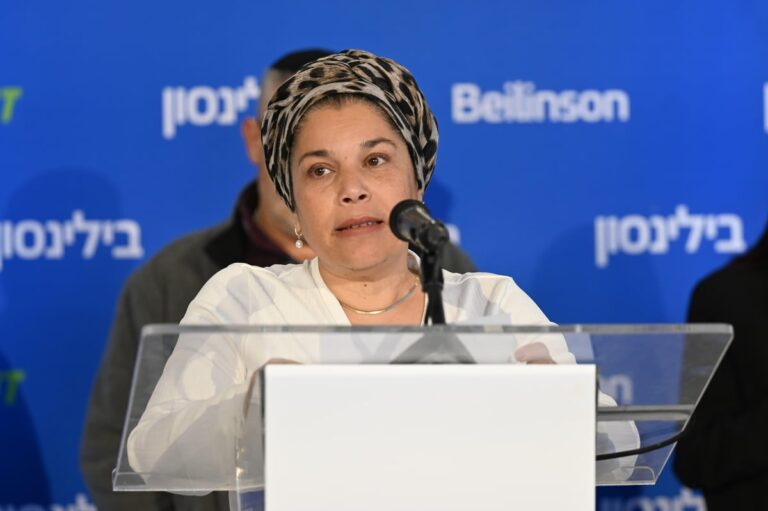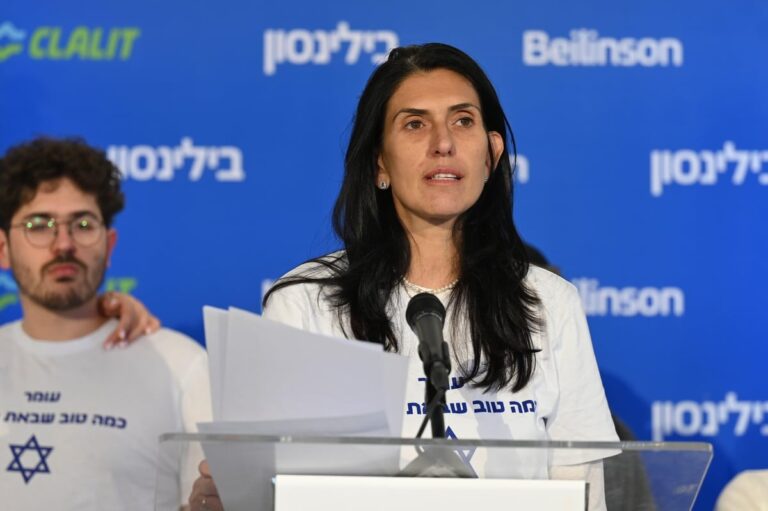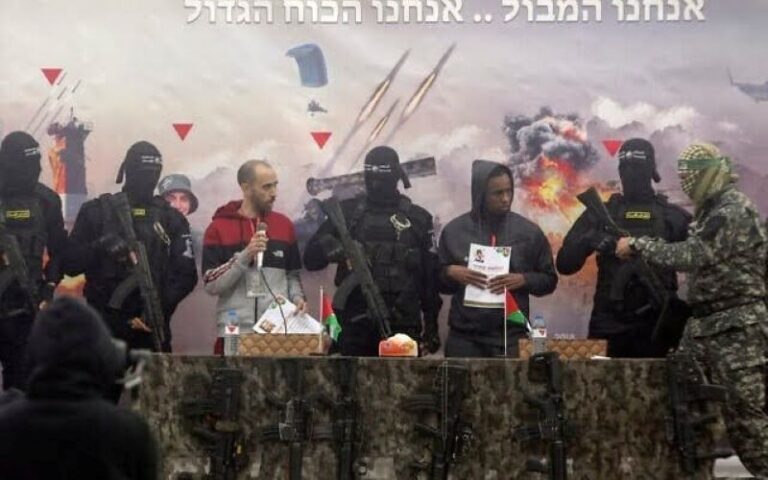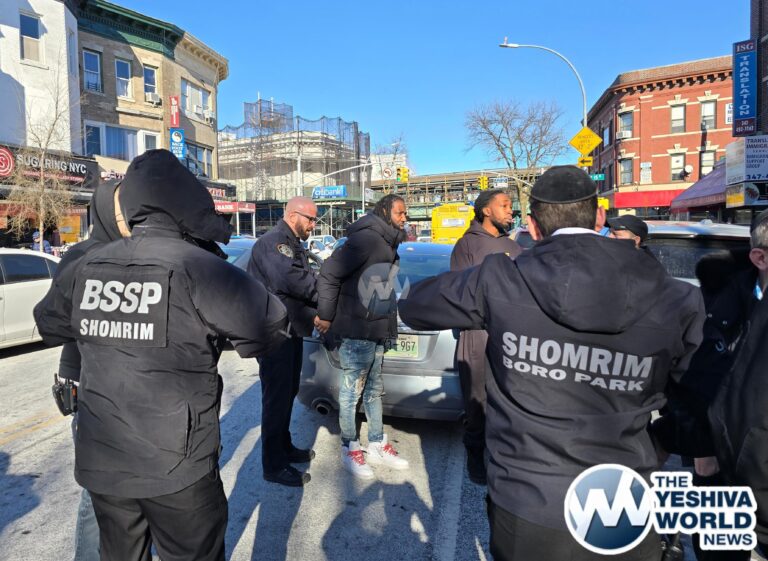 The following is meant as a convenient review of Halachos pertaining to Chanuka. The Piskei Din for the most part are based purely on the Sugyos, Shulchan Aruch and Ramah, Nosei Keilim, and the Mishna Berura, unless stated otherwise. They are based on my understanding of the aforementioned texts through the teachings of my Rebeim. As individual circumstances are often important in determining the psak in specific cases, and as there may be different approaches to some of the issues, one should always check with one’s Rov first.
The following is meant as a convenient review of Halachos pertaining to Chanuka. The Piskei Din for the most part are based purely on the Sugyos, Shulchan Aruch and Ramah, Nosei Keilim, and the Mishna Berura, unless stated otherwise. They are based on my understanding of the aforementioned texts through the teachings of my Rebeim. As individual circumstances are often important in determining the psak in specific cases, and as there may be different approaches to some of the issues, one should always check with one’s Rov first.
Rabbi Krakowski Serves as the OU Kashrut division’s Rabbinical Representative in Israel. He serves as a Posek in the Larger Shaarei Chesed Neighborhood in Yerusholaim. Rabbi Krakowski has been mishamesh many Rabbonim and Poskim both In America and in Eretz-Yisroel. Rabbi Krakowski started his Yeshiva years in Beis Hamedrash and Mesivta of Baltimore. He Then continued in Yeshivas Shaar HaTorah Grodna (Queens NY), South Fallsburg, Brisk (Yerushalayim), and currently still learns in Kollel Nachlos Elazar (Yerushalayim).
- There are no stringencies regarding work on Chanuka. One can work all the days of Chanuka at any time of day.
- There is a minhag that women don’t do any work (i.e. laundry, house hold chores, or professional jobs) while the candles are lit.
- This doesn’t mean if the candles stay lit for 5 hours they cannot work for five hours. Rather, it means that women should refrain from work only until a half hour after nightfall (Tzais), (or a half hour from when the Chanuka lights were lit, if this was later than Tzais).
- This ‘not working’ does not include cooking for dinner that night or other things needed for then.
- One should refrain from getting involved in a job or starting to eat a half hour prior to candle lighting (unless it is something that will certainly take only a minimal amount of time).
- There is a minhag that even men don’t do melacha while the candles are lit so as to show that we can’t derive use from the Chanuka lights.
- This minhag should definitely not be kept at the expense of Talmud Torah.
- It would seem that there isn’t any obligation to have any special Seudos Mitzva on Chanuka (although there is a source to having such Seudos – see Ramah).
- However, since it has become a minhag to have special family gatherings and the like on Chanuka, it is important to turn these into Seudos Mitzvos by saying Divrei Torah, and singing praises to Hashem.
- As there is a Mitzva to praise Hashem on Chanuka, if we utilize the Seuda (i.e. ‘Chanuka party’) for this purpose we are in essence turning the Seuda into a part of a great Mitzva.
- There is a minhag to eat dairy products on Chanuka because a good part of the miracle (the story of Yehudis) occurred through the eating of Dairy products.
- By eating dairy products we are also fulfilling the Mitzva of praising Hashem on Chanuka as dairy foods help commemorate the miracles.
- Even if one is making a Seudas Mitzva on Chanuka one can make it dairy for this reason.
- There is a minhag to eat fried foods to commemorate the Miracle of the Oil.
- Such foods are likewise being used as a tool to commemorate the miracles of Chanuka thus integrating them into the Mitzva of praising Hashem.
- The Kaf Hachaim says that one should try to make a Seuda every day of Chanuka, and that one should utilize it as a Seudas Mitzva.
- One is not permitted to fast on Chanuka.
- If one accidentally fasts on Chanuka one should fast after Chanuka to atone for their fasting on Chanuka.
- If one had an unpleasant dream on Chanuka and wishes to fast a Taanis Chalom one should ask a competent Halachic authority.
- If one has a Yartzeit for a parent (and if but for Chanuka would have fasted) one should accept upon oneself a later date to fast instead of fasting on Chanuka.
- There is a minhag to ‘gamble’ either with cards, or by using a dreidel.
- Many of the Achronim are very opposed to this Minhag.
- The origin of the minhag to ‘gamble’ (not per say with a Dreidel) is that the Rabbonim at some point felt that gambling was starting to become an issue in the Frum community. They therefore made it a minhag on Chanuka to ‘gamble’ so as to provide a bit of an appropriate outlet for it. This was as an attempt to keep gambling from becoming an all out epidemic in the community (Rabbi Belsky Shlita).
Lighting:
- Everyone must be very careful to light Chanuka candles.
- Even a poor man who lives off of charity must either sell belongings or collect money in order to light.
- Although he should collect money to light he should not collect to light more than a candle a night. (See Halachos that follow).
- Even if right now a poor man has enough money to buy as many lights as the number of nights – he still should only light one as he will have to beg for more money in the future.
- In our day in age in which needy people don’t go around collecting, but rather receive stipends, and candles and oils are cheap – even poor people can light an additional light per night (if they feel they can afford it).
- There are different Minhagim regarding whether females living together with males (i.e. Father, brother etc.) light.
- Wives do not light (unless the husband isn’t going to be lighting at home).
- In Eretz-Yisroel, where Chanuka lights are kindled outside, unmarried girls don’t light (contemporary Poskim based on Chasam Sofer).
- In places where Chanuka lights are kindled indoors many are noheg that girls light as well. From a purely Halachik perspective this would seem preferable as not only were women/girls involved in the miracle but were an integral and key part of it (nonetheless on shouldn’t change from Mesorah).
- It is preferable that everyone should light for themselves and not fulfill their obligation through another person’s lighting.
- The most preferable method of lighting is to add an additional light every night of Chanuka (i.e. the first night one; the last night eight).
- Sephardim are noheg that if the lights are being kindled in this preferable manner “Mehadrin – Min Hamehadrin” then only one set of lights should be kindled per household. This is in order to allow for it to be completely clear how many lights have been kindled.
- While Ashkenazim are Noheg that multiple sets of lights should be kindled – particular care must be given to see to it that the different sets are differentiable from one another.
- The clearer the differentiation the better.
- The first night or two we could allow for two people to kindle on the same Menorah/Chanukia, as there would still be a distinct difference between the two sets on the same Menorah. Whereas later on in Chanuka we should not.
- If the choice is that a person can light the appropriate number of lights each night, or that everyone can light one light that night – then everyone should light one light (Mishna Berura).
- The number of candles being lit must be the same as the number of nights; otherwise only one should be lit.
- Since the Mehadrin Min Hamehadrin cannot be fulfilled, even Sephardim revert to Mehadrin (i.e. each household member should light one light).
- Any kind of fuel may be used for Ner Chanuka. Likewise any kind of wicks may be used.
- There is a hiddur to use a fuel and/or wick that will burn nicely.
- There is a hiddur to use olive oil as a Zecher (reminder) of the miracle of Chanuka.
- Thus there are those who are mehader even more to try to use the most similar olive oil to that which was used in the Beis-Hamikdash – שמן זית זך כתית למאור, and therefore use virgin olive oil. More particularly, if possible with a low acidity level (Rav Eliyashiv Shlita).
- One should not light in an item that will become heavily black and smoky (such as clay or uncoated ceramic).
- If someone does light in such a utensil it should not be reused as the second time the utensil in question is already unappealing.
- Wicks can be reused as many times as they will still light and burn well.
- As the wicks were used for the purpose of a mitzvah “Anshei Maaseh” are particular not to throw them out and instead burn them.
- There are those that save the wicks to be burned with Biur Chametz – so as to use them again and finally for a Mitzva as well.
- From the time of the Rishonim there has been a good deal of discussion as to what is the best location for kindling the Chanuka lights. What is clear is that there are two essential elements as to where one must light: 1)in a way that the person who is lighting is enabling a “Persumei Nisa” (publicizing of the miracle) to other people (even if nobody ends up seeing them). 2) In a way that makes clear the candles may belong to the person who lit them.
- The brisker Rov held that one should light at the Pesach Hachatzer.
- In Yerushalayim this seems to be the prevalent Minhag, although not all do so:
- Rav Shlomo Zalman Aurbach held that if the Pesach Habayis is seen from Reshus Harabim (Public Domain) – then one should light by the Pesach Habayis (next to the door of the house).
- The Chazon Ish held that one should light at the Pesach Habayis. The Chazon Ish held that the more visible the door is to Reshus Harabim the better. He also held that a porch door is (where the porch overlooks Reshus Harabim) is a Pesach that opens to Reshus Harabim. The Chazon Ish often held that a porch door was the best place to light (Chazon Ish Mipi Hashmua).
- Apartment buildings are a relatively new phenomenon with regard to the question as to where to light, and the Psakim (rulings) differ.
- When someone has a porch/balcony that is overlooking Reshus Harabim and it is not more than 20 cubits high (between 33 and 39 feet) then according to the Chazon Ish one can light at the door to this porch/balcony.
- According to the Chazon Ish ruling that one should light at the Pesach Habayis, it would then seem that one can light at the door of his apartment that opens to the communal hallway/stairwell.
- According to the Brisker Rav and to Rav Shlomo Zalman Aurbach one should light at the entrance to the building as long as there aren’t apartments that open to the entrance area. If there are apartments that open directly to the entrance those should light at the entrance while the apartments that open up to a stairwell or the like may be considered to have the din of “Hadar Bealiya” (“one who lives on anattic apartment”):.
- Someone who lives in an Aliya should light at a window. If the window is above twenty cubits, but there are other raised areas from which the window isn’t 20 cubits higher one should still light at the window (Igros Moshe).
- If there is no location within 20 cubits below the window (from where the Menorah could be viewed), there are those that still maintain that it should be lit at the window (see Igros Moshe).There are, however, others who maintain it should then be lit beside some doorway. (Minhag Chasidim and Chacham Ovadia). There are those that compare such a situation to ShaasHasakana and therefore maintain that it can be lit even at the table (Pri Chadash – not according to Ritva).
- In the Diaspora where the prevailing minhag is to light inside – the minhag is to light by a window that can be viewed from Reshus Harabim.
- Many Chasidim are Noheg to still light inside their house at a doorway (generally to the dining room).
- In America this seems to be ok, but in Eretz Yisroel where the minhag is to light outside, it is worthwhile reevaluating.
- In Chutz LaAretz, if someone would like to light outside – it is meshubach
- The minhag in most Yeshivos is that the bachurim light in the dining room.
Regardless of where one ends up lighting, one must make sure that the lights can theoretically be viewed by someone else, and that the lights appear to belong to the person lighting.
- In the event a person lives in a residence that has two or more doors (house, or courtyard), giving the impression that there are two or more separate dwellings, the individual in question should then light near each of those doors.
- If one is lighting at a doorway (whatever its location) one should place the Chanukia on the left side (opposite the mezuzah) so as to be ‘surrounded by Mitzvos’.
- If there is no Mezuzah (because there isn’t a proper doorway) the Chanukia should then be placed on the right (where a Mezuzah would usually be).
- There are those that are Mehader to put up a doorway and put up a Mezuza at the Pesach Habayis/Chatzer in order to have the ideal situation.
- This Hidur isn’t a necessity at all.
- The Menorah must be placed in as close proximity as possible to the actual doorway (within a few inches).
- One should set up the Menorah by putting the first night’s light in the right-most spot. Each succeeding night we then add another light to its left.
- When we light, we start with the left most light (which will always be the new light).
- There are differing Minhagim as to exactly how to set up, and in what order to light the Menorah. If one has a different Minhag (if one is for instance Noheg like the GR”A etc.) one should continue to adhere to that minhag. If not, the above represents the traditional way of lighting.
- The first night we recite three Brachos (blessings) prior to lighting: Lehadlik Ner (shel) Chanuka, She’osoh Nisim, and Shehechianu. From the second night on, we say only the first two prior to lighting (we don’t say Shehechianu at all).
- If one forgot to make a shehechianu or somehow didn’t light the first night, one should make the Shehechianu when lighting the first time afterward. (If one saw a Menorah and only made She’osoh and not Shehechianu it as if they should then make a Shehechianu the next time they light or the next night when they see a Menorah.)
- If one didn’t (and won’t be able to) light, and also cannot have someone else light on his behalf, that person should say She’osoh Nisim if and when he sees someone else’s Ner Chanuka. If this happens on the first night, that person should a Shehechianu as well.
- After lighting the Chanuka candles we say Haneiros Halalu.
- Chanuka candles should be lit with Tzeis (at nightfall).
- There are those that held that the Chanuka lights should be kindled at Shkia (sunset) (GR”A – see Mishna Berura, and accompanying Biur Halacha).
- Many of the recent Poskim (Rav Moshe, R’ Aharon Kotler, and The Chazon Ish) consequently had calculations of intermediate times to light so as to be Yotzei all the opinions.
- Chanuka candles should be lit within a half hour from Tzeis.
- This is because in olden days there was in essence already no more traffic in the streets by a half hour after nightfall.
- Nowadays, since there is usually traffic outside until considerably later, there are those Poskim who are maikel to light later (see Aruch Hashulcan).
- If one is lighting inside one can light as long as there is still someone around to view the Chanuka lights (and as long as it is still night).
- There must be sufficient fuel for a half hour (Chazal established the minimum amount of oil necessary based on the time frame in which people would be around to notice the lights).
- No matter when a person lights his Ner-Chanuka there must be sufficient oil for the light to burn at least a half hour past nightfall.
- If the lights are still burning beyond this half hour one can extinguish them.
- There are those that are Noheg not to extinguish them no matter how long they are burning.
- Nowadays that there is traffic outside beyond a half hour after Tzeis – it still isn’t necessary to allow the lights to burn past a half hour after Tzeis.
- The Brisker Rov was makpid to place enough oil to burn to the wee hours of the morning as there are still passerbies even then.
- The most important aspect of Ner Chanuka is its lighting. Ner Chanuka must therefore be lit in a place that is halachicaly fit for Hadlokas Ner Chanuka. It must also be lit in the place where it is to remain.
- Moving the Ner Chanuka after it is lit is tantamount to extinguishing it.
- One cannot even pick up and hold the Chanuka lights in a stationary position.
- It must be lit in such manner that it can remain lit for the entire time that it needs to be lit (a minimum of a half hour after nightfall, or a half hour if it was lit after nightfall).
- If a candle is extinguished before a half hour, although it was initially lit in such a way that it should have burned for a half hour – the light does not have to be rekindled.
- If it was lit in such a way that it wasn’t likely to last a full half hour (i.e. in a windy location), it must then must be relit, and relit with a Bracha even (if there was an interruption – hefsek – between when the Bracho was made and when it was relit).
- There are those that are Mehader to relight the lights within this half hour even when strictly speaking they are not obligated to.
- Those who are mehader to keep their candles burning for a prolonged period of time (as mentioned in the name of the Brisker Rov) may also be mehader to relight the candles if they are blown out.
- Since the hadloka (lighting) is the Mitzva and not anything done subsequently there is no hidur in adding oil at a later point in time so as to allow the lights to last even longer (so long as there is sufficient fuel for a half hour).
- On Erev Shabbos we light Chanuka candles first, and then Shabbos candles.
- The candles must have enough fuel to last a half hour past Tzeis (nightfall).
- According to the GR”A there need only be enough oil to last a half hour after Shkia (sunset).
- In America the candles should have enough fuel to last about 95 minutes or so (unless someone wants to be makpid on Rabeinu Tam and then they would need sufficient oil for 120 minutes). According to the GR”A there should be enough oil for about 50 minutes.
- In Yerushalayim one needs enough fuel for the lights to last about 105 minutes (according to the GR”A 70 minutes).
- If a man lit Shabbos candles first then he still should light Chanuka candles.
- If a woman forgot and lit Shabbos candles first, she cannot then light Chanuka candles afterwards (just as she cannot do any Melacha). If she had in mind for some reason or another to do melacha after she lit (and not to be Mekabel Shabbos) then she may also light afterwards Ner Chanuka.
- If a woman was confused and thought that she would light Chanuka candles afterwards, she can then light the Chanuka candles even though she already lit Shabbos candles.
- She can also continue to do other Melachos until she lights Chanuka candles, but once the Chanuka candles are lit she must cease doing Melachos immediately.
- If one finds himself with only one candle to light on Erev Shabbos, he should light the candle inside and not make a bracha on it (Aruch Hashulchan).
- If there is an incandescent bulb in the house one should use the bulb as Ner Shabbos (as R’ Chaim Ozer and the Avodas Hamelech used to do) and light the candle for Ner Chanuka (electricity cannot be used for Ner Chanuka as there isn’t sufficient fuel present at the time of the hadloka for a half hour, since electricity is received on an as need basis).
- On Motzei Shabbos there are those who maintain that Ner Chanuka is first and there are those that maintain Havdala is first.
- Nowadays that we are not so makpid to light at Shkia or Tzeis it would seem preferable to make Havdala first.
- According to the GR”A no matter what Ner Chanuka should be first.
- If someone doesn’t have a minhag they should make Havdala first.
- We do not light any of the Chanuka candles from any other Chanuka candles.
- As it is forbidden to derive benefit from the Chanuka candles, we light a Shamesh (an extra candle used to light the Chanuka lights).
- The Shamesh should be lit in a way that makes clear that it is separate from the rest of the Chanuka candles.
- Even if there are strong electric lights around one should still light a shamesh.
- There should be a shamesh for every Menorah (not just one for all the sets together).
- Children of educational age (perhaps as young as three but definitely by the age of nine) should light Chanuka candles of their own (for Ashkenazim as all members of the household light their own).
(YWN World Headquarters – NYC)

